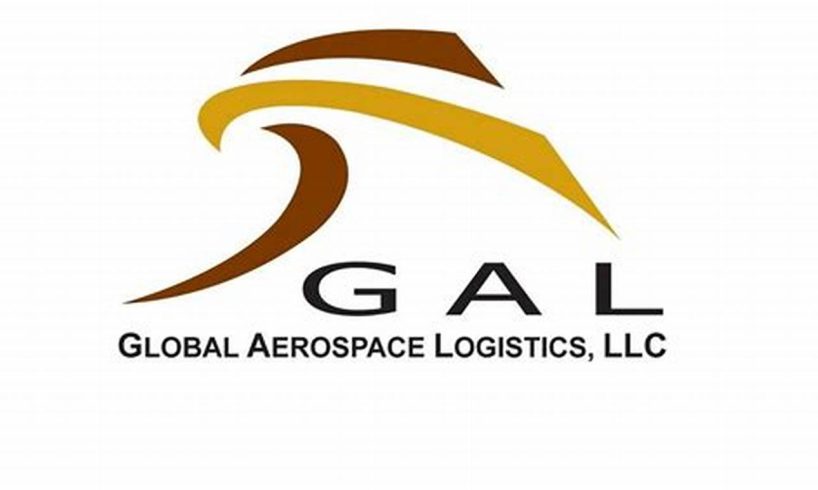
Global aviation logistics encompasses the intricate network of services and infrastructure that facilitate the seamless transportation of goods and materials by air across international borders. It plays a pivotal role in connecting businesses, enabling trade, and facilitating economic growth worldwide.
The aviation logistics industry is characterized by its global reach, specialized infrastructure, and efficient coordination among various stakeholders. It encompasses a wide range of activities, including freight forwarding, warehousing, customs clearance, cargo handling, and transportation management. Air freight is a critical component of global supply chains, allowing businesses to transport high-value and time-sensitive goods quickly and efficiently over long distances.
The main topics covered in this article include:
- The historical evolution and significance of global aviation logistics
- The key players and their roles in the aviation logistics ecosystem
- The challenges and opportunities facing the industry
- The latest technological advancements and their impact on aviation logistics
- The future prospects and trends shaping the industry
1. Infrastructure
Infrastructure plays a vital role in the smooth functioning of global aviation logistics. Airports, cargo terminals, and warehouses are essential components of this infrastructure, providing the physical facilities and resources necessary for the efficient movement of goods and materials by air.
Airports serve as hubs for the loading, unloading, and transshipment of air cargo. They provide runways, taxiways, and other facilities for aircraft operations. Cargo terminals are specialized facilities within airports dedicated to the handling of air cargo. They are equipped with advanced equipment for cargo handling, storage, and security screening.
Warehouses play a crucial role in the storage and distribution of goods prior to and after air transportation. They provide secure and temperature-controlled facilities for the storage of a wide range of commodities, including perishable goods, pharmaceuticals, and hazardous materials.
The efficient operation of airports, cargo terminals, and warehouses is essential for the timely and cost-effective delivery of air cargo. These facilities must be able to handle the increasing volume and diversity of air cargo, while maintaining high levels of security and compliance with international regulations.
Investment in infrastructure development is a key driver of growth in the global aviation logistics industry. By enhancing the capacity and efficiency of airports, cargo terminals, and warehouses, businesses can improve their supply chain performance and gain a competitive advantage.
2. Technology
Technology plays a transformative role in the realm of global aviation logistics. Advanced technologies, such as cargo tracking systems and electronic data interchange (EDI), are essential for efficient and secure logistics operations.
Cargo tracking systems provide real-time visibility into the location and status of shipments. This information is critical for managing inventory, optimizing transportation routes, and ensuring timely delivery. EDI facilitates the electronic exchange of business documents, such as invoices, purchase orders, and shipping manifests. This streamlines communication and reduces errors, leading to improved efficiency and cost savings.
The integration of technology into global aviation logistics has brought about numerous benefits. These include:
- Improved efficiency: Technology automates many tasks, such as cargo handling and documentation, freeing up human resources for more complex tasks.
- Enhanced security: Cargo tracking systems and EDI help to prevent cargo theft and fraud by providing real-time visibility and secure data exchange.
- Reduced costs: Technology can help to reduce logistics costs by optimizing transportation routes and improving inventory management.
- Improved customer service: Real-time tracking and electronic communication enable logistics providers to provide better customer service and respond quickly to inquiries.
The adoption of advanced technologies is a key driver of growth in the global aviation logistics industry. By embracing technology, logistics providers can improve their operational efficiency, enhance security, reduce costs, and provide better customer service.
3. Partnerships
In the realm of global aviation logistics, collaboration and partnerships are indispensable for ensuring seamless and cost-effective transportation. Various stakeholders, including airlines, freight forwarders, ground handlers, and customs authorities, must work in close coordination to facilitate the efficient movement of goods across borders.
- Seamless Intermodal Transportation
Partnerships between airlines and other transportation providers, such as trucking companies and railroads, enable seamless intermodal transportation. By coordinating schedules and optimizing routes, goods can be transported quickly and efficiently from origin to destination, even when multiple modes of transportation are involved. - Efficient Cargo Handling
Collaboration among airlines, freight forwarders, and ground handlers ensures efficient cargo handling at airports. By sharing information and resources, these stakeholders can streamline the loading, unloading, and transshipment of cargo, reducing delays and minimizing the risk of damage. - Customs Clearance and Compliance
Partnerships between logistics providers and customs authorities are crucial for smooth customs clearance and compliance. By working together, they can ensure that goods are properly documented and processed, meeting all regulatory requirements and avoiding delays at borders. - Cost Optimization
Collaboration among various stakeholders in the aviation logistics ecosystem can lead to cost optimization. By sharing resources, negotiating favorable rates, and optimizing transportation routes, logistics providers can reduce overall costs and pass on savings to their customers.
In conclusion, partnerships and collaboration are the lifeblood of global aviation logistics. By working together, airlines, freight forwarders, ground handlers, customs authorities, and other stakeholders can ensure the seamless, cost-effective, and secure transportation of goods around the world.
4. Regulation
In the realm of global aviation logistics, adherence to international regulations and standards is paramount for maintaining the safety and security of air cargo operations. These regulations and standards are established by international organizations, such as the International Civil Aviation Organization (ICAO) and the International Air Transport Association (IATA), and are designed to ensure the safe and efficient movement of goods across borders.
- Safety Regulations
Compliance with safety regulations is essential to prevent accidents and ensure the well-being of personnel involved in air cargo operations. These regulations cover various aspects, including aircraft maintenance, pilot training, and cargo handling procedures. - Security Regulations
Security regulations are in place to prevent unlawful interference with air cargo operations and to protect against terrorism and other threats. These regulations include measures such as cargo screening, background checks on personnel, and secure access to cargo areas. - Environmental Regulations
Environmental regulations aim to minimize the environmental impact of air cargo operations. These regulations address issues such as noise pollution, air pollution, and the handling of hazardous materials. - Customs Regulations
Customs regulations govern the movement of goods across borders and ensure compliance with international trade laws. These regulations include requirements for documentation, customs clearance procedures, and the payment of duties and taxes.
Compliance with international regulations and standards is not only a legal obligation but also a business imperative for companies involved in global aviation logistics. By adhering to these regulations, logistics providers can ensure the safety and security of their operations, reduce risks, and maintain the integrity of the supply chain. Furthermore, compliance helps to foster trust and confidence among stakeholders, including customers, partners, and regulatory authorities.
5. Sustainability
The increasing awareness of environmental issues has led to a growing focus on sustainability in global aviation logistics. The industry is under pressure to reduce its carbon footprint and adopt more sustainable practices. This is being driven by a combination of factors, including customer demand, government regulations, and the rising cost of fuel.
- Fuel Efficiency
One of the most significant ways to reduce the environmental impact of aviation logistics is to improve fuel efficiency. This can be achieved through the use of more fuel-efficient aircraft, as well as by optimizing flight routes and load factors. - Alternative Fuels
Another way to reduce emissions is to use alternative fuels. Sustainable aviation fuels (SAFs) are produced from renewable sources, such as biomass and waste materials. They can be blended with traditional jet fuel to reduce the carbon footprint of aviation operations. - Ground Operations
Ground operations also contribute to the environmental impact of aviation logistics. By optimizing ground handling procedures and using more efficient vehicles, logistics providers can reduce emissions and improve sustainability. - Technology
Technology can play a significant role in improving the sustainability of aviation logistics. For example, data analytics can be used to optimize flight routes and reduce fuel consumption. Telematics systems can be used to track and improve the efficiency of ground operations.
The adoption of sustainable practices in aviation logistics is essential for reducing the industry’s environmental impact. By investing in fuel-efficient aircraft, using alternative fuels, and optimizing operations, logistics providers can help to create a more sustainable future for the industry.
6. Globalization
The increasing interconnectedness of the global economy has led to a growing demand for aviation logistics services that can handle the movement of goods across borders. This globalization of trade has resulted in a significant increase in the volume and diversity of goods being transported by air.
- Increased trade volumes
The growth of global trade has led to a significant increase in the volume of goods being transported by air. This is due to the fact that air freight is often the most efficient and cost-effective way to transport goods over long distances. - Increased diversity of goods
The globalization of trade has also led to an increase in the diversity of goods being transported by air. This includes a growing demand for the transportation of high-value and time-sensitive goods, such as electronics, pharmaceuticals, and fresh produce. - Need for specialized services
The increasing volume and diversity of goods being transported by air has led to a growing need for specialized aviation logistics services. These services include temperature-controlled transportation for perishable goods, secure transportation for high-value goods, and customs clearance for goods being shipped across borders. - Growth of e-commerce
The growth of e-commerce has also contributed to the growing demand for aviation logistics services. E-commerce businesses rely on air freight to deliver goods to their customers quickly and efficiently.
The growing demand for aviation logistics services has led to a number of changes in the industry. These changes include the development of new technologies, the expansion of existing infrastructure, and the emergence of new business models. The aviation logistics industry is expected to continue to grow in the coming years, driven by the continued globalization of trade and the growth of e-commerce.
7. Security
Security is paramount in global aviation logistics, as it ensures the safety and integrity of the supply chain. Aviation logistics providers are responsible for implementing and maintaining robust security measures to prevent the transportation of dangerous goods and protect against terrorism.
- Screening and Inspection
Aviation logistics providers utilize advanced screening technologies, such as X-ray machines and explosive trace detectors, to identify and prevent the transportation of dangerous goods. Thorough inspections of cargo and baggage are conducted to ensure compliance with safety regulations and to prevent the smuggling of prohibited items. - Secure Facilities
Aviation logistics facilities are designed and operated with security in mind. Access to restricted areas is controlled through security passes and biometric identification systems. Closed-circuit television (CCTV) cameras and motion detectors monitor activity within the facilities, providing real-time surveillance and deterring unauthorized access. - Background Checks and Training
Aviation logistics providers conduct thorough background checks on their employees to ensure their reliability and trustworthiness. Employees are trained on security procedures and best practices to maintain a high level of vigilance and to identify potential threats. - Collaboration with Law Enforcement
Aviation logistics providers work closely with law enforcement agencies to share intelligence and coordinate security measures. They participate in joint training exercises and information-sharing programs to enhance their ability to detect and respond to security threats.
These strict security measures are essential for safeguarding global aviation logistics and ensuring the safe and secure transportation of goods. By adhering to these measures, aviation logistics providers contribute to the overall safety and security of the global supply chain.
Global Aviation Logistics FAQs
This section addresses frequently asked questions about global aviation logistics, providing concise and informative answers to common concerns and misconceptions.
Question 1: What is global aviation logistics?
Global aviation logistics encompasses the intricate network of services and infrastructure that facilitate the seamless transportation of goods and materials by air across international borders. It plays a pivotal role in connecting businesses, enabling trade, and facilitating economic growth worldwide.
Question 2: Why is global aviation logistics important?
Global aviation logistics is crucial for the efficient movement of goods around the world. It enables businesses to access global markets, facilitates just-in-time manufacturing, and supports the delivery of essential goods, such as medical supplies and humanitarian aid.
Question 3: What are the key challenges in global aviation logistics?
The global aviation logistics industry faces challenges such as rising fuel costs, geopolitical tensions, and the need for enhanced security measures. Additionally, the increasing volume and complexity of global trade pose operational challenges for logistics providers.
Question 4: How is technology transforming global aviation logistics?
Technology is revolutionizing the industry through advancements such as real-time tracking systems, data analytics, and automation. These technologies improve efficiency, enhance visibility, and optimize decision-making for logistics providers.
Question 5: What are the future trends in global aviation logistics?
The future of global aviation logistics is expected to be shaped by factors such as the growth of e-commerce, the increasing adoption of sustainable practices, and the development of autonomous technologies.
Question 6: How can businesses benefit from global aviation logistics?
Businesses can leverage global aviation logistics to expand their reach, improve supply chain efficiency, and reduce costs. By partnering with experienced logistics providers, businesses can gain access to specialized expertise, global networks, and innovative solutions.
These FAQs provide a comprehensive overview of key aspects and considerations in global aviation logistics, helping businesses and individuals better understand the complexities and opportunities within this dynamic industry.
Transition to the next article section: Exploring the Benefits of Global Aviation Logistics
Tips for Optimizing Global Aviation Logistics
In the realm of global aviation logistics, efficiency, cost-effectiveness, and security are paramount. By adopting the following tips, businesses and individuals can optimize their logistics strategies and enhance their global operations.
Tip 1: Plan and Prepare Thoroughly
Meticulous planning is essential for successful global aviation logistics. Research potential partners, compare costs and services, and establish clear communication channels to ensure smooth coordination throughout the supply chain.
Tip 2: Leverage Technology and Data
Embrace technology to streamline processes, enhance visibility, and make data-driven decisions. Utilize real-time tracking systems, data analytics, and automation tools to improve efficiency and reduce errors.
Tip 3: Prioritize Security and Compliance
Adhere to stringent security measures and comply with international regulations to ensure the safety and integrity of your shipments. Implement robust screening procedures, secure storage facilities, and background checks for personnel.
Tip 4: Foster Collaboration and Partnerships
Establish strong partnerships with reliable airlines, freight forwarders, and ground handlers. Effective collaboration leads to optimized routes, reduced costs, and enhanced service levels.
Tip 5: Embrace Sustainability
Adopt sustainable practices to minimize the environmental impact of your logistics operations. Utilize fuel-efficient aircraft, alternative fuels, and optimize ground handling procedures to reduce carbon emissions.
Tip 6: Stay Informed and Adapt
Continuously monitor industry trends, technological advancements, and regulatory changes. Adapt your logistics strategies accordingly to stay competitive and respond effectively to evolving market dynamics.
Tip 7: Measure, Analyze, and Improve
Regularly evaluate your logistics performance using key metrics. Analyze data, identify areas for improvement, and implement corrective actions to enhance efficiency and customer satisfaction.
Tip 8: Seek Professional Advice
Consider consulting with experienced global aviation logistics providers to gain expert insights, tailored solutions, and access to specialized networks and resources.
By adhering to these tips, businesses and individuals can optimize their global aviation logistics operations, gaining a competitive edge, reducing costs, and ensuring the safe and efficient movement of goods worldwide.
Transition to the conclusion of the article: The Benefits of Global Aviation Logistics
Conclusion
Global aviation logistics serves as the backbone of international trade, enabling businesses to connect with global markets, facilitate just-in-time manufacturing, and deliver essential goods worldwide. Its efficient and secure transportation of goods across borders drives economic growth and supports global supply chains.
As technology continues to transform the industry, businesses must embrace innovation to optimize their logistics strategies. Collaboration, sustainability, and data-driven decision-making are key to success in the ever-evolving global aviation logistics landscape. By leveraging the opportunities and addressing the challenges, businesses can harness the power of global aviation logistics to gain a competitive edge and drive success in the global marketplace.






